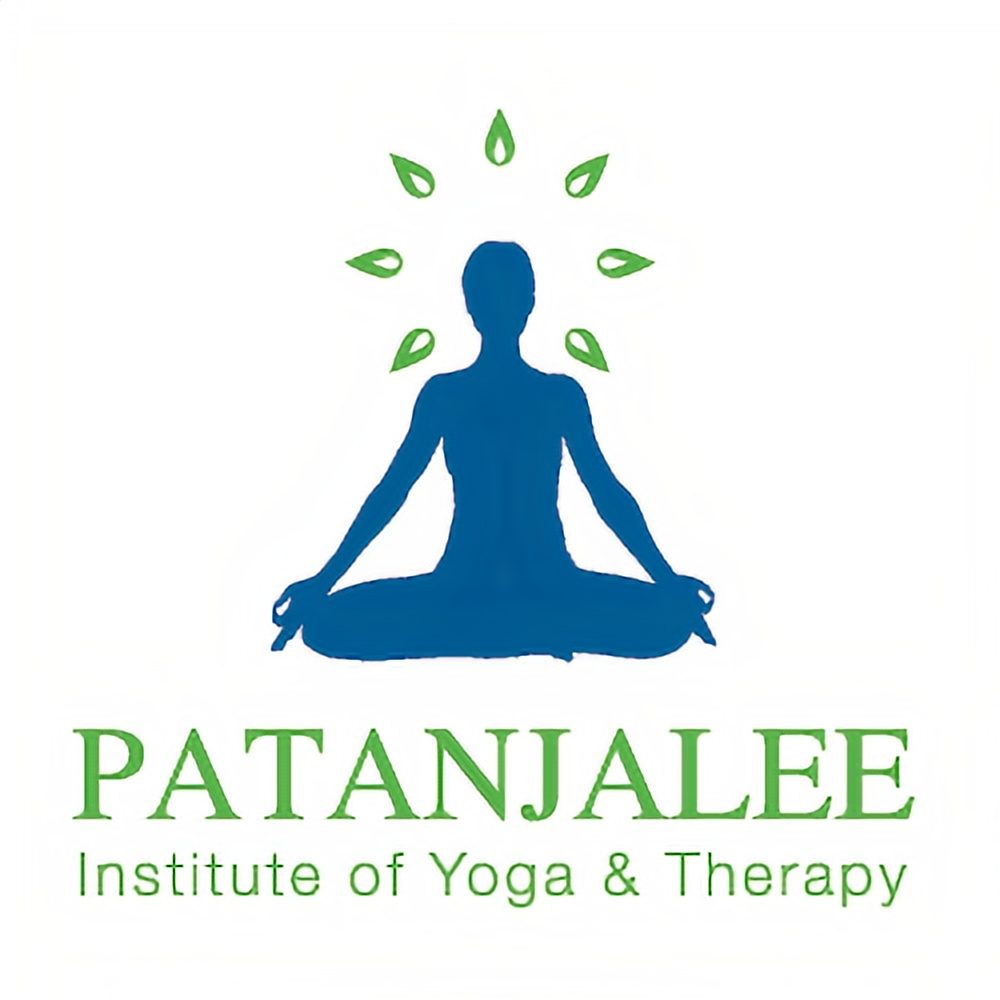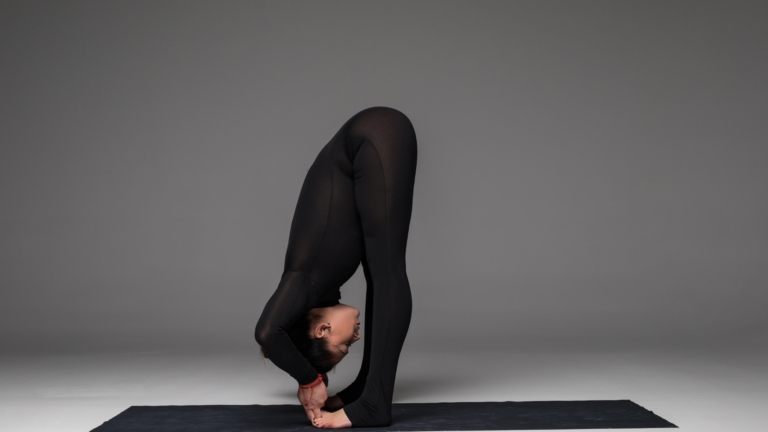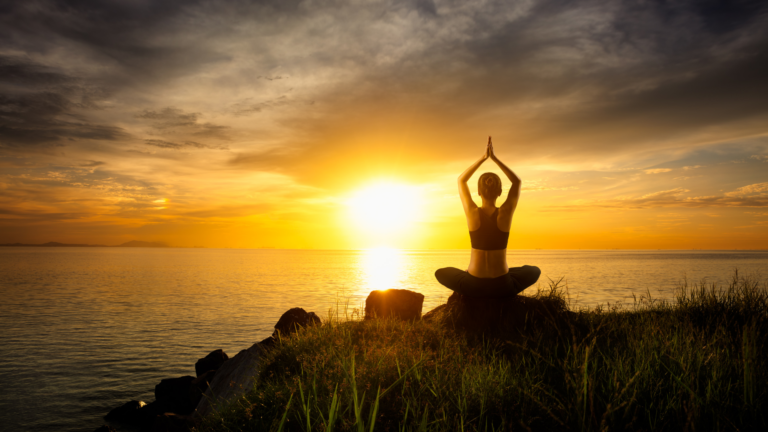Gomukhasana – Cow Face Pose: Steps, Benefits, and Cautions
Let’s dive into a classic yoga pose that’s as effective as it is interestingly named: Gomukhasana, or Cow Face Pose. If you’re wondering why it’s called that, well, it’s said the pose looks like a cow’s face. The crossed legs mimic the cow’s mouth, and the arms represent its ears. But don’t let the name fool you—this pose is all about unlocking tight spots, calming the mind, and giving your body a much-needed stretch.
Here at Patanjalee Shyambhai Yoga, we believe in breaking down the benefits and steps of every pose in a way that feels approachable and fun. So, let’s moo-ve right into it!
What Is Gomukhasana?
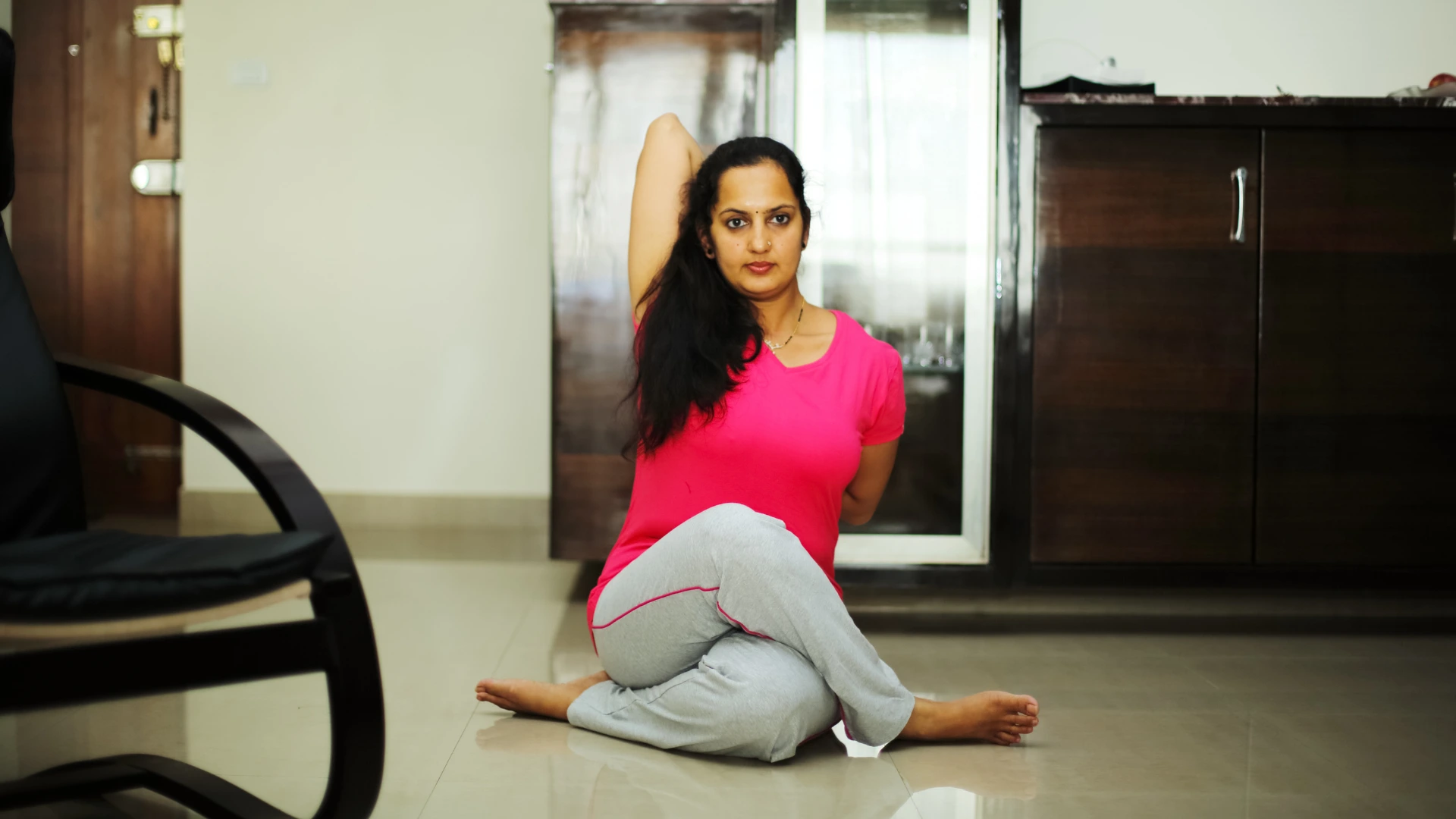
Gomukhasana is a seated yoga pose that stretches multiple muscle groups, enhances flexibility, and promotes mindfulness. It’s perfect for anyone looking to open their hips, improve shoulder mobility, or just chill while stretching deeply. According to the India Book of Records, the longest duration of holding the Gomukhasana was 1 hour, 1 minute, and 21 seconds.
How to Get Into Gomukhasana (Cow Face Pose)
Don’t worry if it looks tricky at first—we’ll walk you through it step-by-step. Ready? Grab your yoga mat and let’s go:
Step 1: Start in a Comfortable Seated Position
- Sit down on your mat with your legs extended in front of you.
- Shake out your legs to relax them before starting.
Step 2: Cross Your Legs
- Bend your left leg and bring your left heel close to your right hip.
- Now, stack your right leg on top of your left, bringing the right heel near your left hip.
- Adjust until your knees are stacked one above the other.
Step 3: Position Your Arms
- Raise your right arm overhead, bending it at the elbow to reach down your back.
- Bring your left arm behind your back and attempt to clasp your right hand.
- If your hands don’t meet, no stress! Use a strap, towel, or even a scarf to bridge the gap.
Step 4: Lengthen and Breathe
- Sit up tall, keeping your spine straight.
- Relax your face and breathe deeply. Hold for 30 seconds to 1 minute, or as long as you feel comfortable.
Step 5: Switch Sides
- Release gently and repeat the same steps with the opposite leg and arm.
Benefits of Gomukhasana
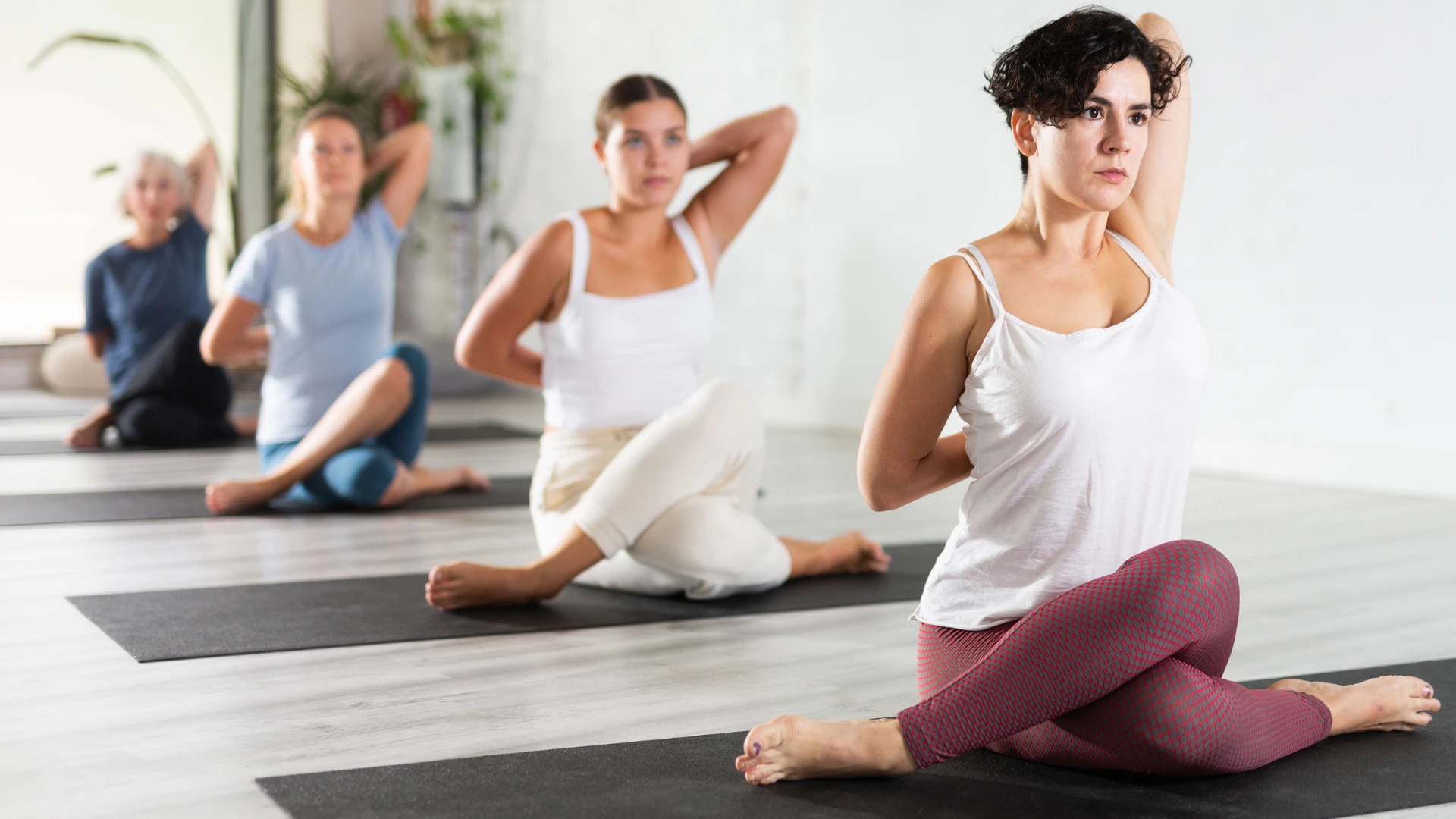
This pose isn’t just about looking like a cow’s face—it’s a whole-body healer! Here’s why Gomukhasana deserves a spot in your yoga flow:
1. Opens Up Tight Hips
If you spend a lot of time sitting (desk jobs, we see you!), Gomukhasana is your go-to for releasing hip tension.
Check out our blog, “8 Poses to Open Up Tight Hips & Relieve Tension Now” to learn more about the poses to loosen your hips.
2. Improves Shoulder Flexibility
The arm position stretches the shoulders, upper arms, and chest, reducing stiffness and improving mobility.
3. Enhances Posture
By elongating the spine and opening the chest, this pose helps you sit and stand taller.
4. Boosts Circulation
Sitting in this pose stimulates blood flow to your lower body, promoting healthier muscles and joints.
5. Encourages Mental Focus
Like most yoga poses, Gomukhasana encourages deep breathing and mindfulness, which can help you feel calm and centered.
6. Reduces Stress
Stretching deeply releases built-up tension in the body, helping you feel relaxed and refreshed.
7. Eases Sciatica and Back Pain
If you’re dealing with sciatica or lower back pain, practicing this pose through online yoga classes for back pain might offer some sweet relief by releasing tight muscles around the affected areas.
Cautions and Modifications
Every yoga pose comes with its own set of do’s and don’ts, and Gomukhasana is no exception.
Who Should Be Careful?
- Knee Injuries: If you have knee pain or a history of knee issues, modify the pose by sitting on a cushion or avoiding deep leg folds.
- Shoulder Issues: Skip the arm bind if it causes discomfort; simply place your hands on your lap.
- Severe Hip Pain: If your hips feel too tight, stick with a simpler hip-opener like Sukhasana (Easy Pose).
Pro Tips for Beginners
- Use Props: A yoga block or bolster under your hips can make the pose more accessible.
- Focus on One Side at a Time: If doing the full pose feels overwhelming, practice the arm and leg stretches separately.
- Take Breaks: Always listen to your body. If it feels like too much, ease out of the pose and try again later.
Gomukhasana Variations
Feeling adventurous? Try these tweaks to spice up your practice:
- Seated with Strap: Use a yoga strap for your hands if they don’t reach.
- Leg Focus Only: Skip the arms and focus solely on the hip stretch.
- Half Gomukhasana: Keep one leg extended while folding the other to reduce intensity.
Pro Tips for a Perfect Pose
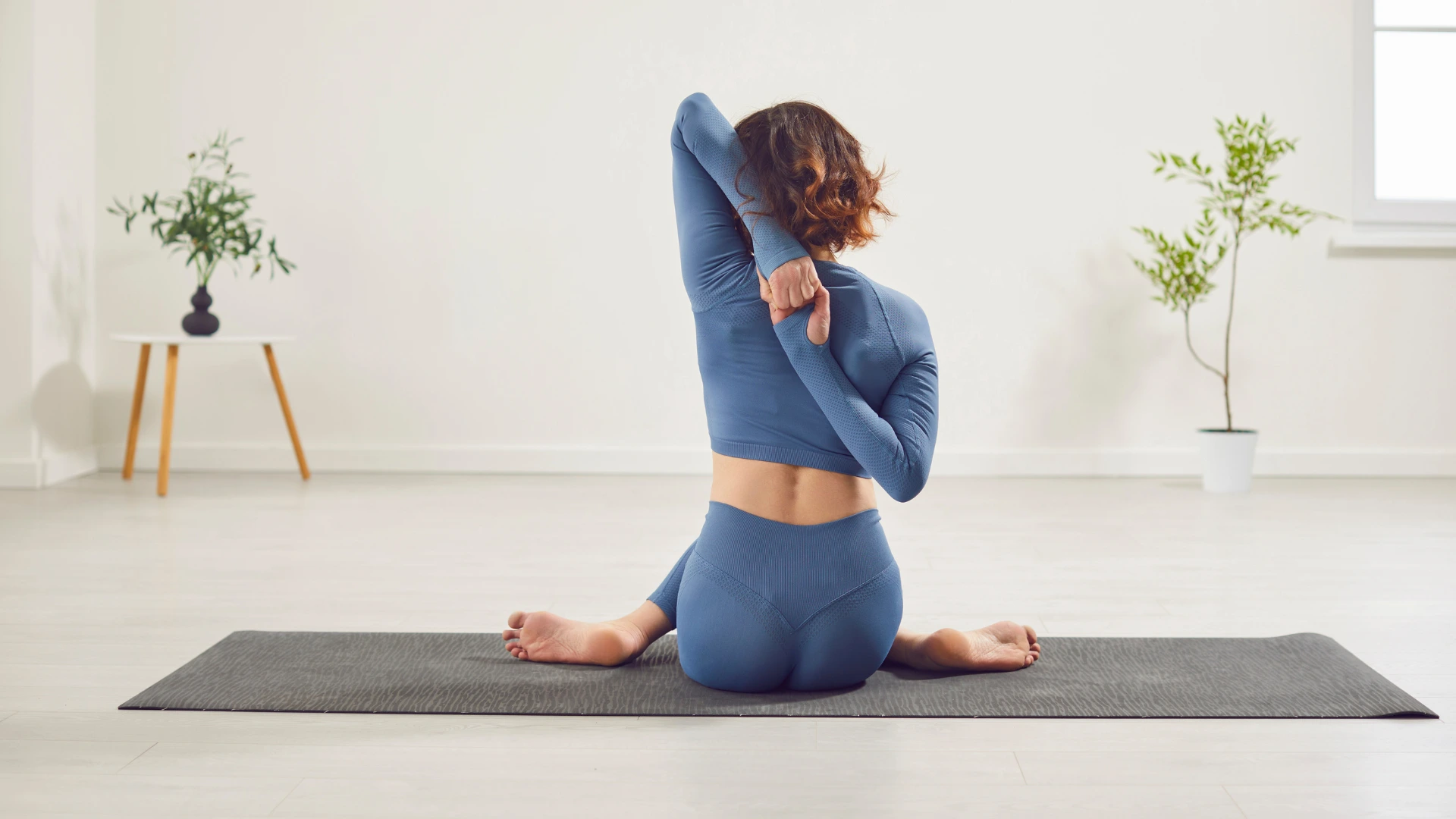
- Warm Up First: Start with poses like Cat-Cow, Child’s Pose, or Butterfly to prepare your body.
- Engage Your Core: A strong core supports your spine and helps you hold the pose longer.
- Keep It Symmetrical: Don’t forget to repeat the pose on both sides to balance your body.
- Stay Mindful: Focus on your breath—it’s the key to staying relaxed and aligned.
Why Patanjalee Shyambhai Yoga Loves Gomukhasana
At Patanjalee Shyambhai Yoga, we’re all about poses that bring balance to your body and mind. Gomukhasana is a fantastic example of how a single pose can work wonders for your physical and mental well-being. Whether you’re looking to release tension, boost flexibility, or simply enjoy a calming stretch, this pose is a must-try.
A Natural Detox for Your Body
When you sit deeply in Gomukhasana, the gentle compression of your thighs and hips improves circulation in the pelvic and lower abdominal region. This subtle stimulation supports digestion, enhances detoxification, and revitalizes internal organs naturally. Many practitioners report feeling lighter, more energized, and refreshed after consistent practice, as if the body has been cleansed, nourished, and renewed from within.
Improves Flexibility & Muscle Strength
A study highlighted that over 68% of yoga practitioners in India reported significant improvements in muscle strength and flexibility when regularly practicing poses like Gomukhasana. The stretch of shoulders, hips, and spine contributes to better overall mobility.
Boosts Mind-Body Connection
Unlike fast-paced exercises, Gomukhasana encourages you to slow down, breathe deeply, and pay attention to every sensation. Holding the pose with awareness allows you to notice how your hips, shoulders, and back gradually release tension. This intimate sense of connection between the body and mind helps reduce daily stress, calms racing thoughts, and improves mindfulness, making it easier to carry steady focus, balance, and clarity into everyday life situations.
Builds Patience and Inner Strength
At first, Gomukhasana can feel slightly challenging, especially if your hips or shoulders are stiff. But with steady practice and mindful breathing, you’ll notice gentle progress over time. This slow improvement teaches patience, resilience, and determination—qualities that extend far beyond the yoga mat. Each time you hold the pose a little longer, explore a deeper stretch, or breathe more consciously, you strengthen not only your body but also your inner resolve, confidence, and emotional endurance.
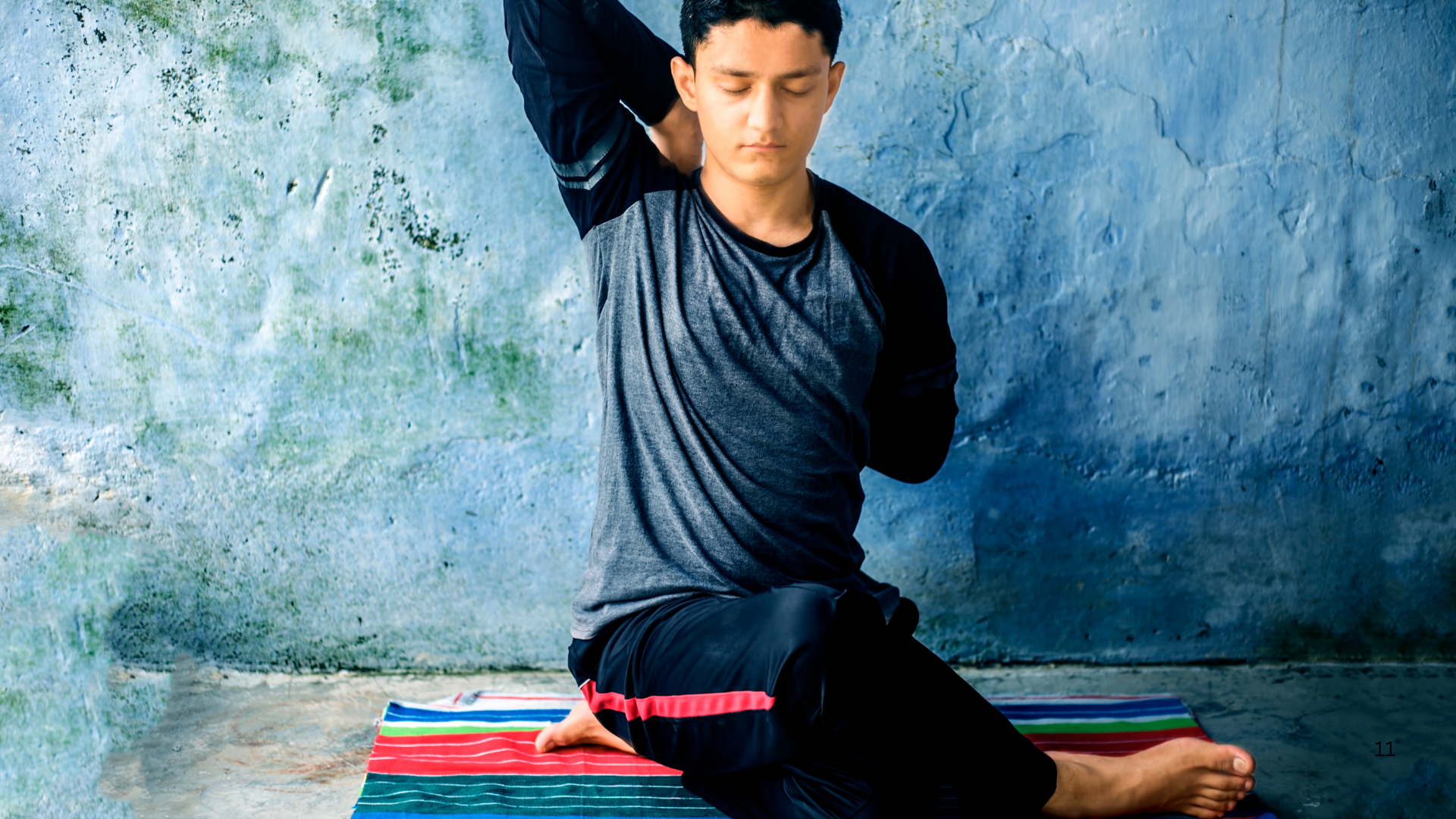
Conclusion
Gomukhasana may seem a bit tricky at first, but like any great yoga pose, it rewards patience and practice. So, the next time your hips or shoulders are crying out for attention, give this pose a go. You’ll feel the difference in no time!
Ready to explore more? Check out our online yoga classes and guides where we make yoga accessible, enjoyable, and totally you!
